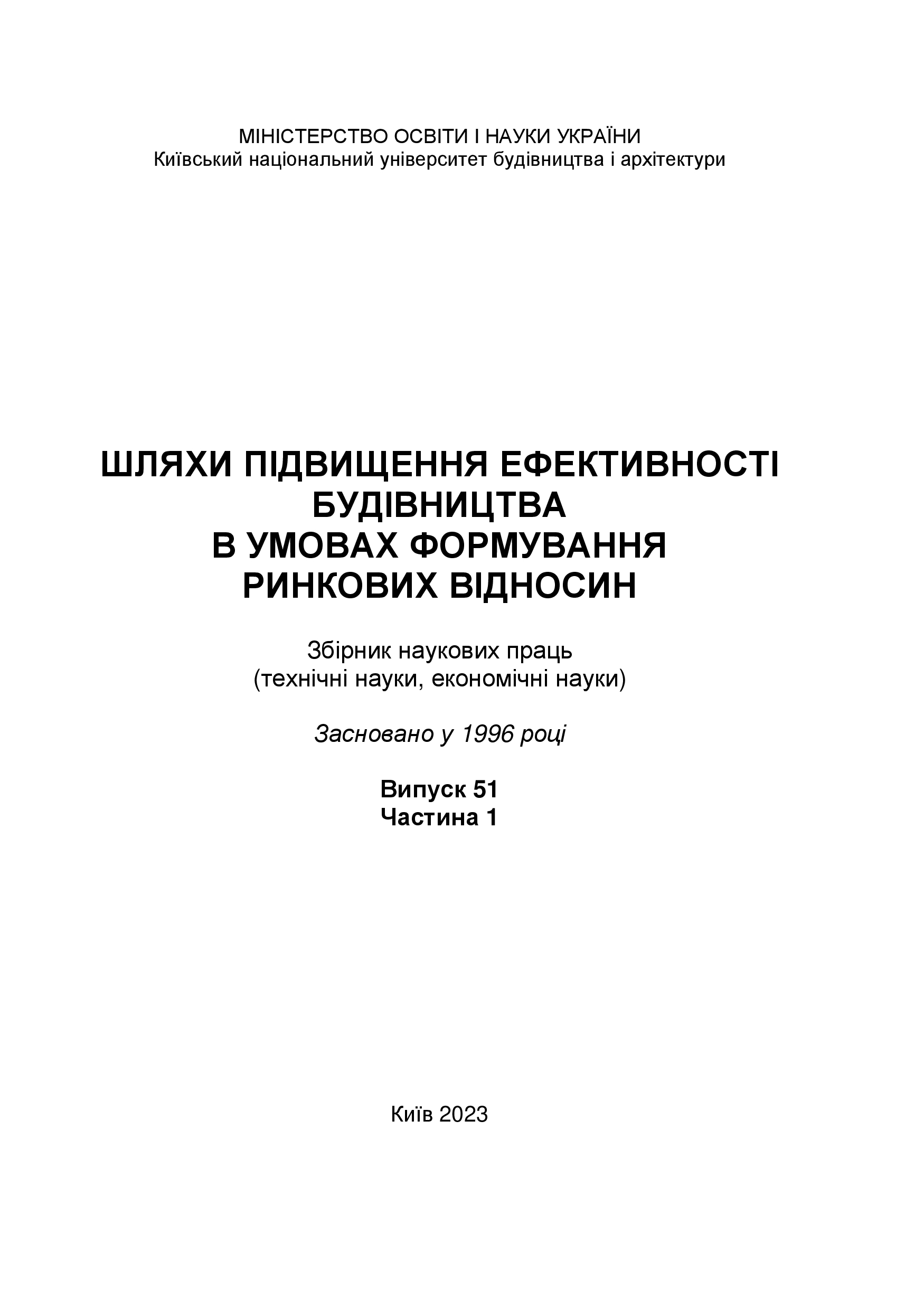Update of the operational production system and organizational structure as the basis of the innovative development of the construction enterprise
DOI:
https://doi.org/10.32347/2707-501x.2023.51(1).162-171Keywords:
enterprise, management, construction development, construction project, development strategy, formalized indicators of stakeholder activityAbstract
The article presents a formalized economic-mathematical model that makes it possible to estimate the effect of the joint introduction of information modeling in construction and an integrated project management system to solve the tasks of extracting from the overall effect of the enterprises' activity the share that arises as a result of the introduction of innovations.
It was determined that the analysis of empirical data is a mandatory condition for the formation of proposals for improving the activities of economic entities, in general, and the development of direct measures within the limits of individual functional types of activity, in particular. In order to obtain up-to-date and verified information about the activities of the studied enterprises, the work pays attention to the analysis of trends in the development of domestic construction. An analysis of the destabilizing effect of factors on the economic security of these enterprises is presented using the approaches and indicators of the rating assessment of Doing Business business conditions. This approach allows detailing the general state of the business environment at the macro level and explaining the deep processes of the response of the enterprise management system to the challenges of modernity, which form a certain security environment at different levels of management of complex socio-economic systems.
A model of flexible management of the enterprise has been developed to ensure its economic security, which is built on the basis of two-component neural network diagnostics, taking into account the needs of the main stakeholders and determining the internal and external factors influencing the enterprise's activities. The model allows management to determine the most relevant list of management decisions and take into account external and internal threats, which ensures an increase in the level of economic security of the enterprise due to sufficient flexibility of the management system and timely response to current threats.
References
Ruggles, R. (1997) Knowledge tools: using technology to manage knowledge better. Working paper for Ernst and Young, <http://www.businessinnovation. ey.com/mko/html/toolsrr.html> (26.042023).
Gallupe, R.B. (2001) Knowledge management systems: surveying the landscape. International Journal of Management Reviews, 3(1), 61–7.
Anumba, C.J., Bloomfield, D., Faraj, I. and Jarvis, P. (2000) Managing and Exploiting Your Knowledge Assets: Knowledge Based Decision Support Techniques for the Construction Industry, BR382. Construction Research Communications Ltd, London.
Storey, J. and Barnet, E. (2000) Knowledge management initiatives: learning from failure. Journal of Knowledge Management, 4(2), 145–56
Honcharenko, T. , Ryzhakova, G. , Borodavka, Y. (2021) Method for representing spatial information of topological relations based on a multidimensional data model ARPN Journal of Engineering and Applied Sciences, 16 (7), рр. 802–809.
Earl, M. (2001). “Knowledge Management Strategies: Toward a Taxonomy.” Journal of Management Information Systems, 19(1), 215-233.
O’Leary, D.E., (2001). “How Knowledge Reuse Informs Effective System Design and Implementation.” IEEE Intelligent Systems, January-February, 44-49.
Tiwana, A. (2000). The Knowledge Management Toolkit: Practical Techniques for Building a Knowledge Management System, Prentice Hall, New Jersey.
Beijerse, R.P. (1999). “Questions in knowledge management: defining and conceptualizing a phenomenon.” Journal of Knowledge Management, 3(2), 94-109.
Harman, C. and Brelade S. (2000). Knowledge Management and the Role of HR:Securing Competitive advantage in the knowledge economy. Financial Times/Prentice Hall, Harlow.
Makedon V . V. Innovatsiyni pidkhody restrukturyzatsiyi promyslovykh pidpryyemstv: teoriya, metodolohiya, praktyka : monohrafiya / nauk. red. K. S. Salyha. Zaporizhzhya : Helʹvetyka, 2018. 514 s.
Trach R., Lendo-Siwicka M. (2018) Zastosowanie sieciowej struktury organizacyjnej w zintegrowanej realizacji przedsięwzięcia budowlanego. Przegląd Naukowy – Inżynieria i Kształtowanie Środowiska , 27 (1), 84–92.
Downloads
Published
How to Cite
Issue
Section
License

This work is licensed under a Creative Commons Attribution 4.0 International License.
Authors who publish with this journal agree to the following terms:
- Authors retain copyright and grant the journal right of first publication with the work simultaneously licensed under a Creative Commons Attribution License that allows others to share the work with an acknowledgement of the work's authorship and initial publication in this journal.
- Authors are able to enter into separate, additional contractual arrangements for the non-exclusive distribution of the journal's published version of the work (e.g., post it to an institutional repository or publish it in a book), with an acknowledgement of its initial publication in this journal.
- Authors are permitted and encouraged to post their work online (e.g., in institutional repositories or on their website) prior to and during the submission process, as it can lead to productive exchanges, as well as earlier and greater citation of published work (See The Effect of Open Access).

